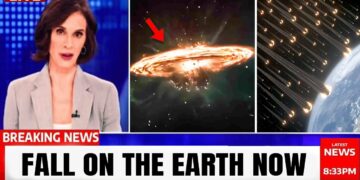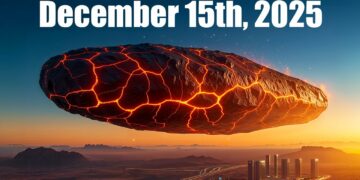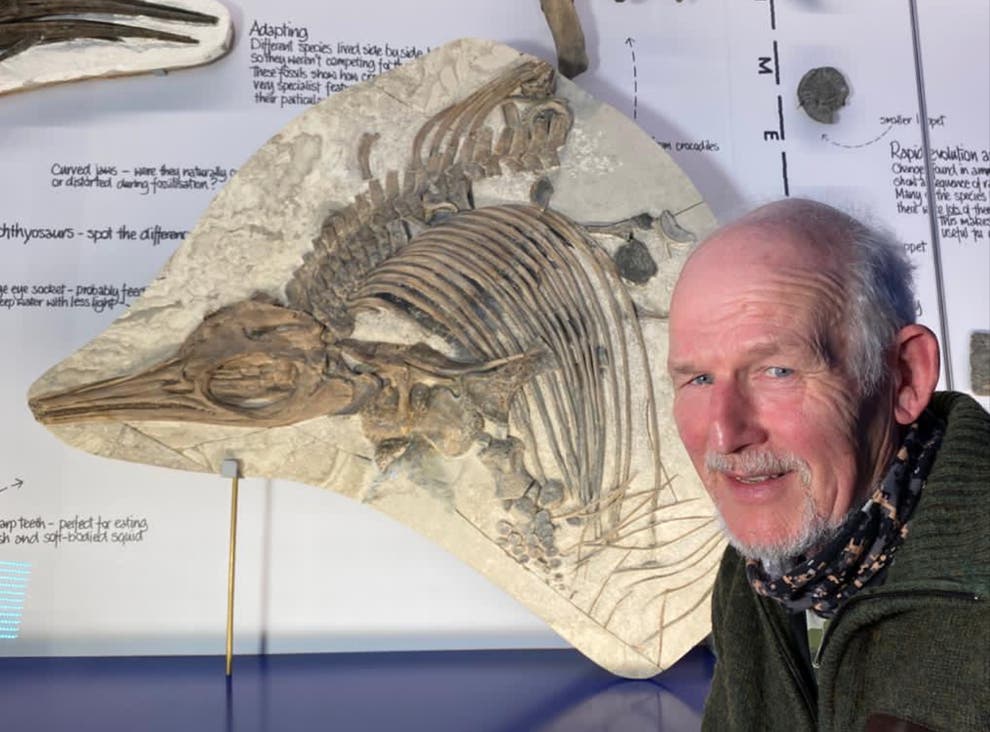If an object is technological, it might maneuver, release mini probes, broadcast signals, or emit artificial lights beyond mere sunlight reflection. For months, amateur astronomers globally tracked Threeey Atlas, the third interstellar object after ‘Oumuamua and Borisov, noting its weekly changing phenomena. The story began with amateur astronomer Leslie Peltier observing from a hillside in northern Chile. Using a 40-inch research-grade telescope with a cryogenically cooled CMOS camera and a high-precision tracking rig linked to NASA’s ephemeris data, Peltier monitored the object for weeks. Initially, it appeared as a fast-moving body from deep space with a green tail glowing from carbon monoxide and nickel emissions, discovered just a week prior.
On September 19th at 2 a.m. UTC, Peltier’s screen revealed an astonishing sight: around the main emerald streak of Threeey Atlas, nine smaller, dim but distinct points appeared, moving in perfect sync with the main body, resembling fireflies around a lantern. Initially dismissed as noise or cosmic rays on astronomer forums, these points were confirmed within 48 hours by major observatories, including the James Webb Space Telescope, Hubble, the Very Large Telescope in Chile, and the Keck Observatory in Hawaii. These instruments, designed to detect the faintest galaxies, confirmed the presence of nine objects with identical speed, trajectory, and green-tinted tails as Threeey Atlas, indicating an interstellar origin.
Spectroscopy revealed that all nine objects shared a metal-rich signature (nickel, cobalt, and high-temperature alloys) and the same carbon monoxide-driven glow as Threeey Atlas. However, each was about one-tenth the size of Threeey Atlas yet powered by a nuclear core twice as potent, outputting an estimated 20 gigawatts compared to Threeey Atlas’s 10 gigawatts. This power-to-mass ratio defies known physics, as such a fusion reaction in such small objects would require exotic materials or impossible confinement pressures, far beyond Earth’s technological capabilities.
The sudden appearance of these nine objects, undetected by months of observation from major telescopes and spacecraft like NASA’s Juno, Parker Solar Probe, and BepiColombo, occurred in just 0.1 milliseconds—30,000 times faster than a human blink. Harvard astronomer Avi Loeb proposed the “mothership hypothesis,” suggesting Threeey Atlas is a large interstellar craft deploying probes as it enters our solar system, possibly to map or extract resources. Alternatively, another scientist suggested a natural explanation: Threeey Atlas, a comet-like object, might have collided with an interstellar rock, fragmenting into dense, kinetically charged pieces. However, this theory struggles to explain the identical 20-gigawatt power signatures and matching green tails.
Simultaneously, another interstellar comet, Swan R2, 100 times more massive and luminous, approaches from the opposite direction, with a tail spanning 2.5 degrees. Historical records suggest an object on a similar trajectory every 2,200 years, with references in ancient Chinese, Babylonian, and medieval European texts. Some speculate Swan R2 could interact with Threeey Atlas, either as a cosmic protector or a joint visitor with unknown intentions.
Despite the data, NASA and ESA remain largely silent, issuing only brief statements about ongoing observations. Leaked memos suggest contingency plans, including interception and planetary defense scenarios, with China repurposing its Long March 9 and ESA revisiting its Don Quijote mission. Private companies like SpaceX and Blue Origin are reportedly involved in reconnaissance discussions. Loeb has called for a UN emergency session and a global task force, suggesting nuclear readiness to signal Earth’s defensive capabilities.
As October approaches, with both objects nearing perihelion, the world watches with awe and dread. Will Swan R2 collide with Threeey Atlas? Will the probes approach Earth or the Moon? Or will this simply be a spectacular astronomical event? The stakes are high, the data unprecedented, and the truth unknown.






















